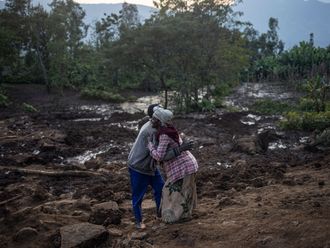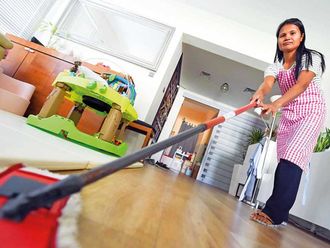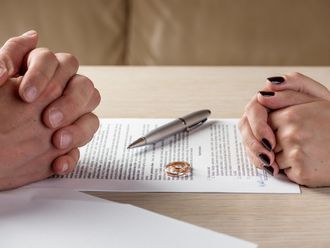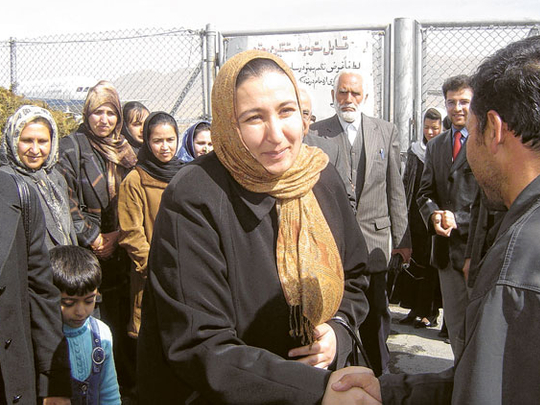
Remember Aisha, the 18-year-old from Afghanistan? Well, this teenager had her nose and ears cut off by her abusive husband, a Taliban follower, as punishment for running away from home. Thanks to the efforts of the Grossman Burn Foundation, (a non-profit organisation), she underwent reconstructive surgery last year.
Aisha's story represents several similar incidents that Afghan women endure but which are little known to the outside world. In this country, where to be born a woman means a life of subjugation and misery, it calls for immense courage to challenge this male-dictated society.
Dr Masouda Jalal belongs to a growing number of women who dare to oppose deep-rooted derogatory traditions in Afghan society.
A paediatrician, along with being Afghanistan's first woman presidential candidate and the former minister of women's affairs, Dr Jalal has been working towards improving the status of women in her country. Through her organisation, the Jalal Foundation, she has empowered several women and is a beacon of hope. Her work earned her global recognition, including the UN Watch Human Rights award in 2010.
In an exclusive interview with Weekend Review, Dr Jalal talks about her organisation and life in Afghanistan.
Tell us about the Jalal Foundation.
The Jalal Foundation was formed in 2006 after I was marginalised from political power due to my liberal ideas concerning women. With the aim of enhancing the lot of women, the foundation has brought about positive changes in the lives of many women through economic empowerment and capacity-building.
As a doctor, I have rendered free service and worked for various UN aid programmes. During the Taliban regime, I was forced to shift my office to my home. The foundation also focuses on women's health. Through our food programmes we feed thousands every day. In the sphere of education it also supported girls' schools in central Afghanistan. This aid lasted for 12 years and continued during the Taliban rule.
Now that the Taliban regime is over, is the status of women better?
We have been through the worst. Afghan women are better than before. They have rights equal to men. Gender discrimination has been outlawed. For the first time in our history, we have a ten-year plan of action for women's advancement. We also have a law on the elimination of violence against women. Our girls are back to school. Our women can work. They can vote and get elected. In other words, they are being treated as humans.
However, women still wear burqas, particularly in remote provinces, where illiteracy rates are high. As for education, women and girls in urban areas have greater access to education than those in the rural areas. There is an acute shortage of female teachers. In general, families do not give much value to educating girls. Afghanistan also has the second-highest maternal mortality rate in the world.
You were the first woman presidential candidate. What made you contest the elections?
It was never planned. Till 2001, I had no inkling that I would join politics. It was only at the insistence of the people that I did. They knew I was transparent and honest. They knew I worked for the people. Some came up and said, "Sister, we want to vote for you." This scared my competitors. They proposed a deal promising me a good position in the cabinet. But I refused. So they campaigned against me, saying voting for women is anti-Islamic. They succeeded to quite an extent, especially with the illiterate class. But where were all these leaders during the Taliban regime? They were away in the United States and Europe while I continued working for the people here.
I decided to contest the elections at a golden moment in the life of our nation after the ousting of the Taliban. People were optimistic and support was pouring in from the international community. I dreamt beyond what an ordinary Afghan woman would dream of — transforming my country, liberating women and my people from poverty. I knew I was running against a stalwart who had the backing of the international community and the political acumen for being president. But I knew that I had a good chance of demonstrating to the women and to our people that the era of women's confinement to home is over. I may have lost the elections but it paved the way for other women to enter politics. Today we have a quota for women in the parliament.
As minister of women's affairs in the Karzai government, what changes were you able to bring about?
I was minister from 2004 to 2006. The first thing was to give a strategic plan to the ministry, which was then expanded to all provinces. Next I enacted a law curbing violence against women. Third, I drafted a ten-year action plan for women's welfare and had [President Hamid] Karzai sign it in London, where he could not have refused to. Later, he dismissed me from his government for putting pressure on him. But I don't care. I got the job done.
During my tenure, the parliament often considered abolishing the Ministry of Women. But with the help of the international community, this ministry continues to exist in Afghanistan.
What about government support now?
Although we have laws that promote gender equality in the constitution and the law on the elimination of violence against women, the president has allowed discriminatory laws such as the Shia Personal Status Law of 2009. This restricts Shia women's movements and keeps them under control of men. Again, while the 2004 constitution states that 25 per cent of the parliament members should be women, the new electoral decree of 2010 has an ambivalent wording, which suggests that if women don't stand for election for any reason, the men can take their seats. Besides, we keep getting edicts from religious bodies.
The Ulema for the eastern region recently issued an edict stating that women cannot travel without a male guardian and women working in international organisations must be aware of the sin of being in the same room as a man. This edict seems to be having an impact, as was seen at a conference of female legal professionals in Kabul in May 2009. Women lawyers and judges from this region were accompanied by their guardians. This clearly goes against the equality provision of the constitution. You see this inequality in the Sharia faculty, where women students are taught a different curriculum than men. The same law instructs that women can only be primary schoolteachers and not judges.
So while rights are given on paper to women, our society remains deeply entrenched in a culture ruled by men.
How can the international community help?
There is a saying that sisterhood is global. You cannot say you have succeeded in improving the status of women unless the status of the Afghan woman has improved.
There are discussions on about talking to the Taliban. That should be discouraged, because the Taliban barely recognises women. The Jalal Foundation is also looking for assistance from international organisations.
Making a difference
- Sadiya, 25, married, is good at tailoring. The Jalal Foundation supported her with 32 tailoring machines to help her open a factory. She employs women and her company produces garments and home furnishings.
- Farzana, 40, married with seven children, is a teacher. With the support of the Jalal Foundation, she underwent a one-year literacy course. Today, along with her daughter, who is also a teacher, Sadiya runs a literacy centre for women.
- Marzia, a young married woman working in an international organisation, was beaten up by her husband and in-laws as they held her responsible for her miscarriages. They stopped her from working. She escaped to her brother's house. After three months, her husband approached the police to bring her back by force. Marzia met Dr Masouda Jalal, who called the legal department of Kabul and requested protection for her. Marzia's husband was called by the legal department and he had to state in writing that he would not harass her anymore. Marzia is happy today.
- Zakiya, who has one child, learnt that her husband had two other wives and several children. When she protested, she had to suffer physical, verbal and repeated sexual violence. She escaped to her father's home. Her husband continued to threaten her with phone calls. The Jalal Foundation helped her get legal protection, a divorce and a job, and also counselled her family. Today she is happy with her baby.
The statistics according to a study by the Jalal Foundation
- 46.9 per cent of women have suffered domestic violence. Out of this, 12.5 per cent have suffered from broken limbs, 6.6 per cent have been permanently disabled and 22.2 per cent have been wounded.
- 7 per cent of women have been beaten up by their husbands as they failed to give birth to boys.
- 66.2 per cent of women have been subjected to different types of verbal violence in their families.
- 41.7 per cent of parents believe that having a girl child is a source of grief.
- At least 59 per cent of researched marriages are considered forced. Out of them, at least 30 per cent have been "badal", or exchange marriages.
- At least 38 per cent of women have been married between the ages of 11 and 15.
- 88 per cent of women have been living with polygamous husbands.
- In 40.6 per cent of researched cases, girls have been kept away from school. Out of this, 29.4 per cent mentioned poor economic status as the reason.
- 71.9 per cent of women have not been able to study and work after marriage.
- 31.4 per cent of women use narcotics for treatment in the absence of health care centres, lack of medicines and doctors and poverty. Families also sometimes prevent them from going to doctors.
- 23.6 per cent of women attributed heavy chores such as fetching water from springs and bringing wood from the mountains as the main reason for their miscarriage, 11.4 per cent blamed their miscarriage on being beaten and 37 per cent consider lack of access to treatment as a reason for miscarriage.


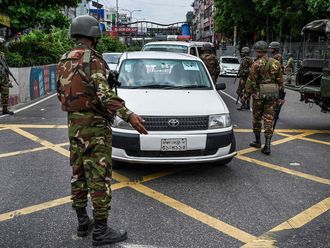
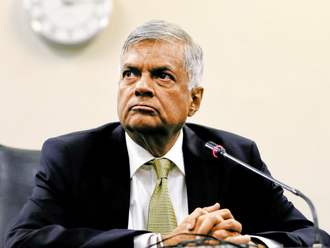

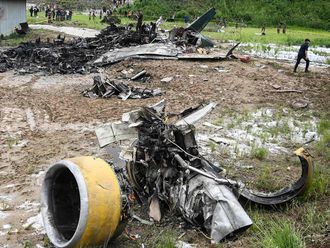
_resources1_16a30b3523c_small.jpg)


